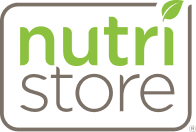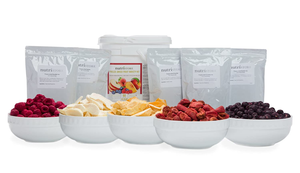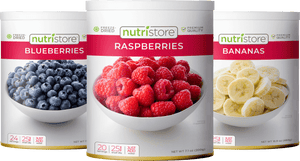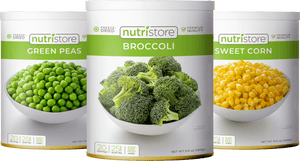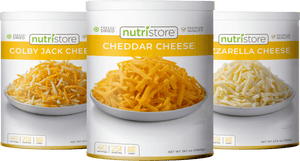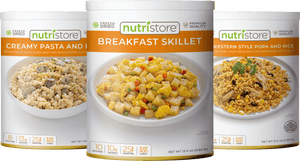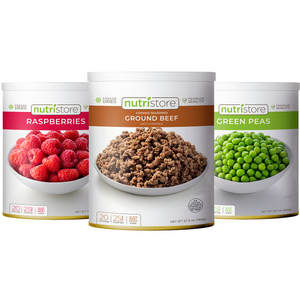Understanding Shelf Life and Other Food Dating Systems
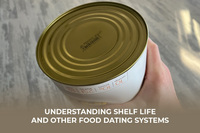
When shopping for emergency food storage, it is crucial to understand how long your food will last. To best plan and prepare for your long-term storage products, it is essential to understand all the different dating systems your product might include and what they mean. Some of these dates consist of; Best-By-Date, Expiration Date, or even a Manufacture Date. Each date will ultimately affect a product's total "shelf life" and help you know how long your food can be stored!
Shelf Life
Shelf life is "the length of time an item remains usable, fit for consumption, or saleable." Freeze-dried food can last up to 25 years unopened, giving them the longest extended shelf life among dried foods. (Freeze-dried: 25 years, Dehydrated: 4 years, Canned: 3 years, Frozen: 2 years.) While these estimated years relating to shelf life can work as a guideline, if the product is not well taken care of, then this shelf life is no longer guaranteed.
For more detailed tips on understanding and extending your foods shelf life, read another recent blog: How Long Freeze Dried Food Really Lasts & The 4 Threats to Shelf Life
Within the food industry, there are three types of "good until" dates that may be found on a food's packaging to help understand potential shelf life. To help understand the most optimal time to use each product. It is also important to note that each of these dates is in place to help communicate, in their own way, when the food quality will begin to decline.
1. Best-By-Date
The best-by-date signals to the consumer when a food product will be at its peak quality or have the most optimal flavor. These dates are found on quickly consumed products such as eggs or poultry. This date, however, does not indicate how "safe" something is to eat. For example, with a strawberry there is a distinguishable difference in flavor and overall experience when it has a bright red color and a firm texture versus when the strawberry is dull, soft, or even mushy. But still, both of these strawberries are usually safe to eat. The best-by-date is unrelated to the dried food industry, including Nutristore products, because each product is flash-frozen at its peak to ensure that the best-by-date is for whenever you need them.
2. Expiration (Expiry) Date
This date or label signals to the consumer when a product is ready to be thrown out, or the safe range of consumption has "expired." Expiration dates are one of the most common labels found on food products. This label is also predicted and stamped, assuming that consumers will store the product correctly. Because freeze-drying makes a product seemingly "unperishable," it can be hard to clearly define a specific expiration date.
3. Manufacturer’s-Date
The manufacturer's date is when the company actually produced or packaged the final product. This date or label is also known as the "packed on" or "pack date." This type of dating is the least common across the food industry because it is designed for the manufacturer and retailer. However, here at Nutristore, we have found that providing the manufacturer's date makes it easier for our customers to keep track of and rotate through their long-term food storage. All Nutristore Freeze Dried Food products have a 25-year shelf life, meaning the products are at peak consumption for 25 years beyond the manufacturer date when unopened.
Pro Tip: When you receive a Nutristore product, find the manufacturer date on the bottom and then write the shelf life date of 25 years on the can label to help track!
Comments (2)
Question: After opening a can what is the shelf life?, What are the safe storage steps after opening?
The chicken beef and strawberries all are great. I don’t mind eating them now
Leave a Comment
You May Also Like

Introducing the Nutristore Brand Ambassador Program
Our all-new Nutristore Ambassadors help develop recipes, blogs and other content featuring all kinds of Nutristore products. They also provide amazing tips and valuable feedback!

5 Most Common Real-Life Emergencies to Be Prepared For
There are several major life events that could happen at any moment. It is important to be aware of these real-world "emergencies”, and how to best prepare for them when they st...
